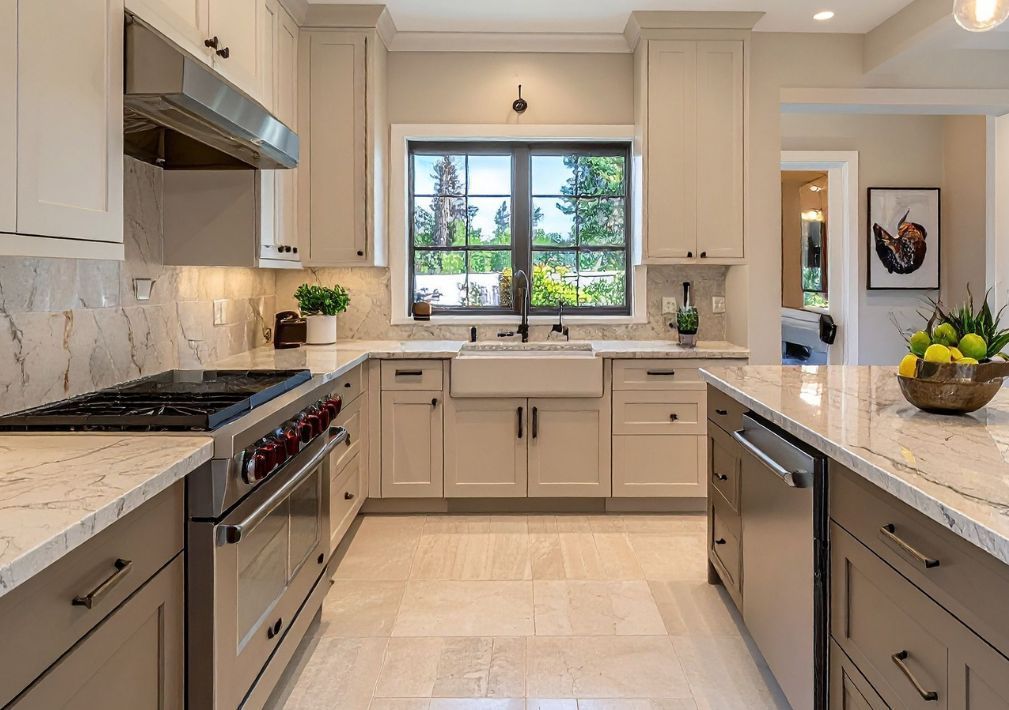How to Keep Mold from Returning After Remediation

The key to keeping mold from returning after mold remediation is to control indoor moisture, improve ventilation, and schedule regular inspections with trusted professionals. Mold remediation solves the immediate problem, but unless the conditions that caused it are fixed, mold can return.
Why Mold Comes Back After Remediation
Even after a thorough mold remediation, some homeowners are surprised to find new growth weeks or months later. Mold spores are everywhere in the environment, but they only grow when moisture and organic materials are available. If the environment remains damp, spores can take hold again.
Voda Cleaning & Restoration stresses that successful mold remediation is not only about removal, but also preventing recurrence. If water damage, humidity, or poor air circulation remain unresolved, mold will likely return.
Common reasons mold reappears include:
- Plumbing leaks behind walls or under sinks
- Unsealed windows or roofs that allow rainwater in
- Poor ventilation in basements, attics, or crawlspaces
- Humidity levels above 60% indoors
- Damp flooring or carpets not dried within 24 hours
Moisture Control: Your First Line of Defense
Moisture is the number one factor in mold growth. Without it, mold spores cannot thrive. After professional mold remediation, homeowners should focus on strict moisture control to prevent recurrence.
Practical moisture control tips:
- Repair Leaks Immediately – A small roof drip or pipe leak can cause large mold problems if ignored.
- Use Dehumidifiers – Keep indoor humidity between 30% and 50%. Digital hygrometers are inexpensive tools to monitor this.
- Dry Damp Areas Quickly – Carpets, drywall, and upholstery should be dried within 24 to 48 hours after getting wet.
- Check Condensation-Prone Areas – Windows, basements, and air ducts often collect moisture and should be regularly inspected.
Professional teams like Voda Cleaning & Restoration use advanced moisture detection equipment that identifies hidden dampness behind walls or under floors, ensuring that the remediation process is complete and long lasting.
The Role of Ventilation in Mold Prevention
Good airflow helps reduce humidity and prevents stagnant air pockets where mold thrives. Without ventilation, even small amounts of moisture can linger long enough for spores to grow.
Ventilation strategies to adopt:
- Install and use exhaust fans in kitchens, bathrooms, and laundry rooms.
- Open windows and doors whenever the weather allows to keep fresh air moving.
- Use air purifiers with HEPA filters to capture mold spores and allergens.
- Maintain your HVAC system by changing filters and scheduling seasonal servicing.
Voda Cleaning & Restoration often reminds homeowners that improving ventilation is one of the most affordable and effective long-term solutions for mold control.
Routine Inspections Are Essential
After remediation, many homeowners assume the problem is solved permanently. However, mold can grow quietly in hidden areas long before it becomes visible. Regular inspections catch these issues early.
Professional inspections may include:
- Thermal imaging to detect hidden moisture
- Air quality tests to check spore levels
- Visual checks in attics, crawlspaces, and basements
- Surface testing in areas where discoloration may appear
Scheduling annual or seasonal inspections with Voda Cleaning & Restoration ensures small problems are handled before they become expensive infestations.
The Connection Between Cleaning and Mold Control
A clean home reduces mold’s ability to take hold. Dust and dirt act as a food source for mold spores, especially when combined with moisture.
Simple cleaning practices include:
- Regular vacuuming with a HEPA filter to capture tiny particles
- Wiping down bathroom tiles, grout, and fixtures to prevent buildup
- Cleaning gutters and downspouts to stop water from pooling near the foundation
- Disinfecting high-risk areas with mold-resistant cleaning solutions
When supported by professional mold remediation services, regular cleaning routines become an effective part of mold prevention.
Why Professional Mold Remediation Is Key
Some homeowners consider DIY cleanup when they see small mold spots. While this may temporarily remove surface growth, it doesn’t address the source. Incomplete removal can actually spread spores, making the problem worse.
Voda Cleaning & Restoration uses specialized tools and antimicrobial solutions that penetrate beyond the surface. Professionals ensure:
- Containment of mold spores during cleaning
- Removal of contaminated materials if needed
- Treatment of surfaces to prevent regrowth
- Identification of hidden sources of moisture
This expertise makes professional remediation far more effective than DIY methods, ensuring the problem doesn’t return.
Lifestyle Habits That Reduce Mold Risks
Beyond professional services, your everyday habits play a role in preventing mold after remediation.
Adopt these practical habits:
- Run a dehumidifier during humid months.
- Avoid drying laundry indoors, as it releases moisture.
- Place houseplants on trays to catch excess water.
- Use mold-resistant paint in high-moisture rooms.
- Ensure furniture is placed slightly away from walls to improve airflow.
Voda Cleaning & Restoration encourages homeowners to combine professional mold remediation with lifestyle adjustments for maximum protection.
Mold Remediation and Health Protection
One of the most overlooked reasons to prevent mold recurrence is its impact on health. Mold exposure can cause respiratory issues, allergic reactions, and in some cases, serious health complications.
By keeping mold from returning, homeowners protect not only their property but also their families’ well-being. Mold remediation isn’t just a home maintenance service; it’s a safeguard for healthier living.
Seasonal Risks That Affect Mold After Remediation
Mold does not behave the same way throughout the year. Seasonal changes directly affect moisture levels, ventilation needs, and the overall risk of recurrence after mold remediation. For example, summer in humid climates often means higher indoor moisture, making basements and bathrooms more prone to new mold growth. Winter brings its own challenges, as condensation forms on cold windows and walls when indoor heating meets outdoor chill.
To manage seasonal risks effectively:
- In summer, use dehumidifiers in high-humidity rooms and ensure air conditioning systems are serviced.
- In winter, check window seals, run exhaust fans, and insulate walls that attract condensation.
- During rainy seasons, inspect roofs and gutters frequently to prevent leaks.
- In spring, clean out crawlspaces, garages, and attics to remove excess dust and debris that could trap moisture.
Voda Cleaning & Restoration recommends proactive adjustments for each season, ensuring mold remediation efforts hold strong year-round.
Remodeling and Renovations: Hidden Mold Concerns
Many homeowners invest in remodeling or renovations after mold remediation. While this can improve living spaces, construction work can also disturb hidden spores or expose previously unnoticed problem areas. Tearing down old drywall, removing flooring, or opening ceilings can sometimes reveal mold that was concealed during the first inspection.
To prevent setbacks during remodeling projects:
- Work with contractors who understand moisture control.
- Use mold-resistant building materials such as drywall and insulation.
- Seal foundations, basements, and crawlspaces before finishing projects.
- Schedule a mold inspection with Voda Cleaning & Restoration before major renovations begin.
By planning carefully, homeowners avoid reintroducing mold into freshly remodeled areas. Mold remediation is not only about removal but also about preparing your home for long-term resilience. Combining remediation with smart construction practices ensures that new living spaces remain safe, dry, and mold-free.
The Final Verdict on Mold Remediation
Keeping mold from returning after remediation requires more than one solution. By controlling moisture, ensuring proper ventilation, scheduling inspections, and making smart lifestyle adjustments, homeowners can protect their property for years to come.
Voda Cleaning & Restoration provides expert mold remediation along with the knowledge and guidance you need for prevention. Call us at (608) 398-8632 or schedule an appointment today to keep your home safe, dry, and mold-free.
Frequently Asked Questions About Mold Remediation
Why does mold sometimes return even after professional remediation?
Mold often comes back because of unresolved moisture issues. Even the best mold remediation won’t last if leaks, poor ventilation, or high humidity remain unaddressed.
Should I repaint walls right after remediation?
Yes, but only with mold-resistant paint and after ensuring all surfaces are completely dry. Using the right paint can add an extra barrier against future growth.
Can running an air conditioner help reduce mold?
Absolutely. Air conditioners reduce indoor humidity and improve airflow, both of which discourage mold growth. Regular maintenance of your HVAC system is critical.
How do I know if hidden mold is still present after remediation?
Signs include a musty odor, increased allergy symptoms, or discoloration on walls. For confirmation, professional air quality testing or inspection by Voda Cleaning & Restoration is recommended.
More Blogs
Categories


